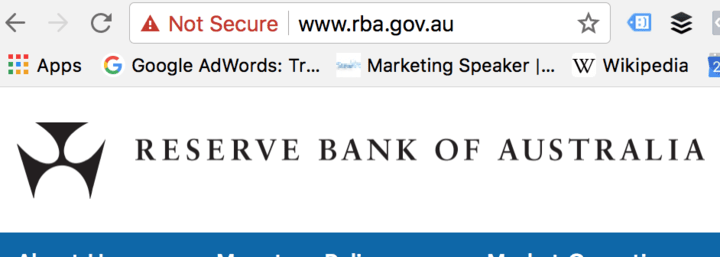Switzer HTTPS Migration
Peter Switzer has anchored his Switzer on Sky News program since 2010 and has garnered a loyal following by offering viewers a no-nonsense approach to daily business news and having access to guests from the top echelons of finance and business. Peter regularly contributes to several top media outlets, including The Australian newspaper and Yahoo!7 Finance, as well as being the founder of The Switzer Group.

Jim Stewart has made several appearances on the Switzer show since its inception, and is a valued contributor to Peter’s show. Over the years he has delivered expert advice to Switzer show viewers on a range of digital marketing and SEO topics such as why Black Hat SEO techniques are harmful to your business, the benefits of hosting your site on WordPress, Google’s shifting preference to mobile friendly sites and why you should keep up, and the competitive advantage a fast website offers. Jim’s latest appearance saw him explain to Switzer show viewers the impending changes to Internet security imposed by Google with the adoption of HTTPS and the myriad of dangers posed to sites that fail to implement the updates.
What is HTTPS?
HTTPS is an acronym for Hypertext Transfer Protocol Secure and is an additional layer of security situated between a website and visitor that stops so called ‘man-in-the-middle’ attacks. Without HTTPS, all sensitive information sent between the two, passwords, account details, log-ins and form information, can be intercepted and read. When HTTPS is engaged, all information sent from the website is encrypted and is decrypted by your computer once it is received.
Why do you need it?
Whilst technically you don’t have to have it, HTTPS adds great value to the user experience, and this is something Google places a strong emphasis on. If you own a website that conducts transactions or has forms to collect visitor information – vital if you conduct lead generation via contact forms – then from October this year visitors will start seeing ‘Not Secure’ warning signs in the address bar. Considering the American Department of Commerce found that 84% of poll respondents held concerns over online shopping and transactions due to security fears, it stands to reason that seeing a red warning sign expressing your site’s lack of security will see many potential customers tuck tail and run.

How to get HTTPS
So if the benefits of greater security, an improved user experience and improved Google rankings appeals, how do you go about implementing HTTPS? Firstly you need to obtain a HTTPS certificate. This is most commonly done via your hosting company and you will need to be specific in the type of certificate that suits your domain/s. They will then handle the install for you. Anything additional on your site that was using HTTP, such as embedded videos, CSS files, or JavaScript will all need to be HTTPS. The same applies to your site’s framework and external resources. Once all that is complete, you then need to redirect all of your old HTTP pages to the new certified HTTPS pages before establishing new sitemaps in Google Search Console.
What happens if you get it wrong?
There is an easy road to switching to HTTPS, but like many paths of least resistance it is fraught with dangers. A common problem is simply turning on HTTPS and switching off HTTP. Job done. Not quite. Each individual page of your old HTTP site needs to be redirected to the equivalent HTTPS one. Failure to do so can result in all your URLs not being seen by Google and your site ‘vanishing’. This will result in a serious drop in Google rankings that can take months and money to recover from. The other major complication can arise from having both your old HTTP and new HTTPS sites live simultaneously. If you offer Google the paradox of choice it tends to select neither, again causing your rankings to nosedive.
Need more information?
The team at StewArt Media specialise in HTTPS migrations. We have conducted many since Google first made its announcement of intent to implement and reward sites that adopt the new measures. We have learned from experience the procedures to follow when transitioning a site to HTTPS and what to be aware of to protect your traffic and Google rankings. A smooth implementation of HTTPS will see you gain a competitive advantage over your rivals and strengthen your position into the future. Google’s change is happening soon, so why not get ahead of the pack now?
For further information on making the change to HTTPS, contact us today.
